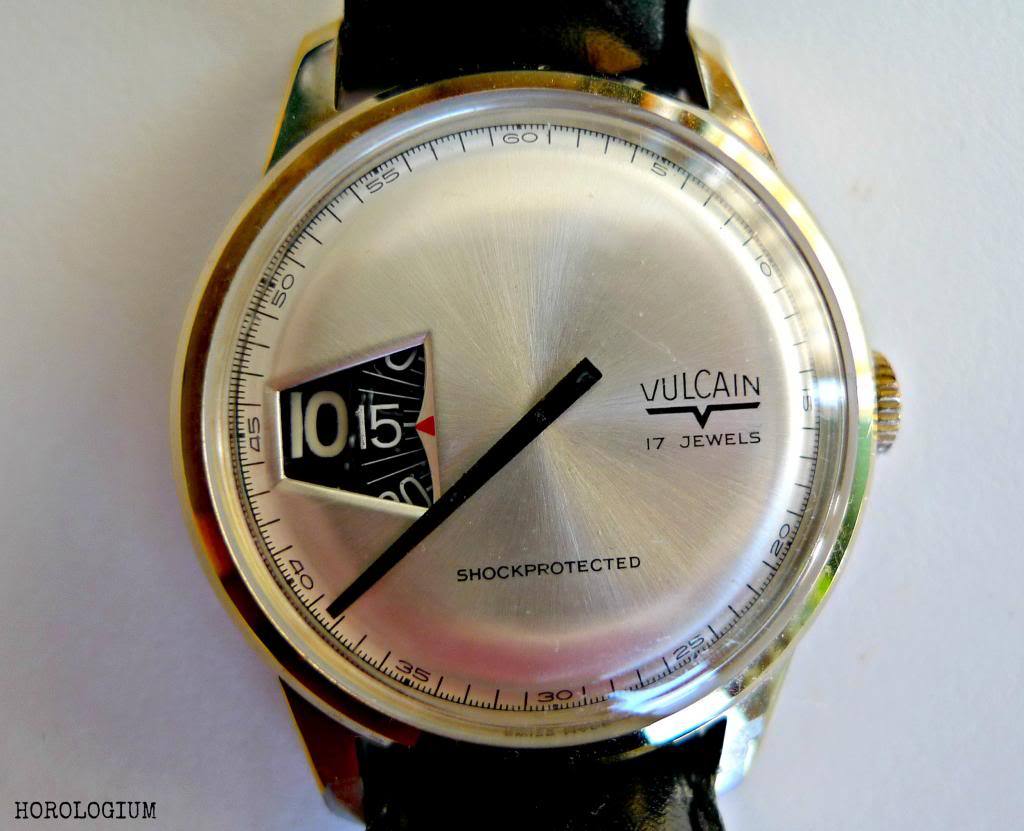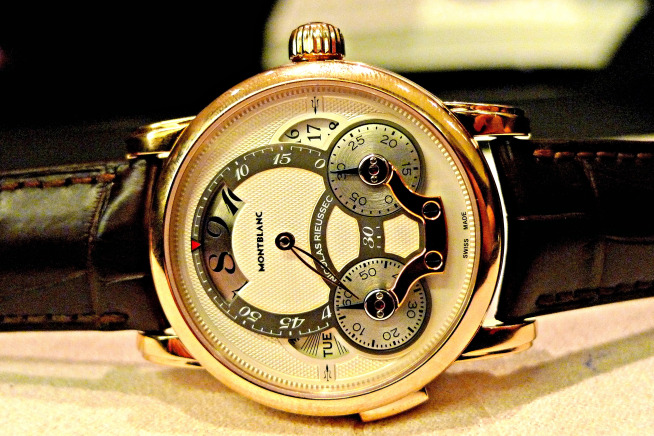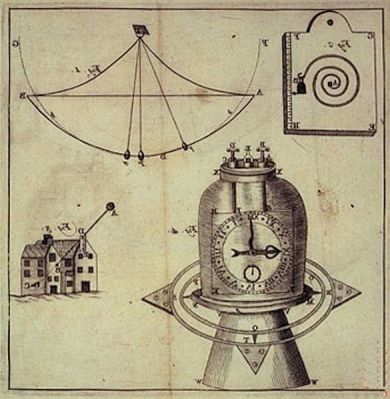HISTORY
The term ‘chronometer’ was coined by English replica watchmaker and writer Jeremy Thacker in 1714 in his pamphlet ‘The Longitudes Examin’d’ for clocks used to calculate longitude on marine voyages. He invented a marine chronometer, a clock encased within a vacuum chamber that protected the movement from the inevitable effects of humidity and atmospheric pressure.

Thacker’s Chronometer
Unfortunately, it was a failure as a chronometer.
Accurate to six seconds a day, it fell somewhat short of the three seconds a day required to win the £20,000 first offered by the English Board of Longitude in the same year (1714) to anyone who could solve the problem of establishing the longitude of a ship at sea.
Thacker was thus condemned to the historical shadows of John Harrison, who also managed to score a ranking of 39 in the BBC’s 2002 poll of ‘100 Greatest Britons’ for his achievements, something which I am sure, had he been able to discover this from an alternate universe in which he was still alive in 2002, would have mollified him somewhat for his lifetime’s worth of horological trials.
Clockmaker John Harrison (24 March 1693 – 24 March 1776) presented his first attempt at a marine chronometer in 1730. It was his H5 ‘pocket’ chronometer, produced in 1772, and accurate to one-third of a second per day, which solved the problem of establishing the longitude of a ship at sea, thus revolutionising and extending the possibility of safe long distance sea travel, and earning him the title of ‘The Father of Longitude’.By the time of the H5’s public unveiling, he had been working on the chronometer problem since 1730.

Harrison’s Chronometer H5
(Collection of the Worshipful Company of Clockmakers)
In 1773, Harrison received £8,750 from Parliament for his achievements, after the direct intervention of George III. He appealed directly to the King, and in 1772 Harrison’s son William was summoned to an audience with the King. George III is reported to have said: “By God, Harrison, I will see you righted!”.
Until the advent and implementation of global satellite navigation, an accurate chronometer was essential for marine and air navigation.
VACHERON CONSTANTIN ROYAL CHRONOMETER
Controle Officiel Suisse des Chronomètres (COSC) defines a chronometer as “a high-precision replica watch capable of displaying the seconds and housing a movement that has been tested over several days, in different positions and at different temperatures, by an official neutral body (COSC).”
Since 1973 the term ‘chronometer’ has designated a replica watch having successfully passed the COSC trials.
Launched in 1907, Vacheron Constantin’s Chronomètre Royal has most notably been recognised in recent years through VC’s celebration, in 2007, of its centenary with the Chronomètre Royal 1907.

For a comprehensive history of Vacheron’s Chronomètres, see Alex Ghotbi’s brilliant post at The Hour Lounge.
The example below dates from the 1960s. In 1962 VC’s manual calibres 1007 and 1008 were replaced by calibre 1072, making it Vacheron Constantin’s first automatic calibre with COSC certification.
Cal 1070: automatic with small seconds, no date
Cal 1071: automatic with central seconds
Cal 1072: as cal 1071 but with date
Cal 1072/1: as 1072 but with Gyromax.

Vacheron Constantin “Royal Chronometer”
SPECIFICATIONS :
Caliber : 1702
Jewels : 29
Metal : 0.750 18ct WG
Case : Two-body, solid, polished and brushed, screwed-down case back, horn lugs, caseback engraved with the Maltese cross and “Chronomètre Royal”.
Dial : Original silver dial with diamond set in Maltese Cross
Diameter : 35mm
Thickness : 12mm


Although 35mm is small by today’s standards, where a minimum of 40mm seems almost de rigueur, the Ref. 6694 does not seem particularly small when worn.
The idea behind the Chronomètre was that of a legible precision instrument robust enough for everyday use. With its distinctive case design clearly indicating its 1960s origins, this uncommon replica watch is a deceptively elegant functional piece, with a wink to frivolity courtesy of the discreet diamond in the Maltese Cross.
When I first saw this replica watch (which has some signs of age discolourisation on the dial) I admit that it didn’t grab my attention in quite the way that it grabbed its owner’s, but as I spent some more time looking at it, in reading about the history, and in looking back at the photos, I was struck foremost by how much I missed in terms of appreciating the design of the case and secondly, of its historical interest as a timepiece. I suspect I’d like it a bit more if it didn’t have the diamond, which I find a bit incongruous.
Like it though I may, if presented with the choice of two chronometers, this Ref. 6694 and a Chronomètre Royal 1907, I have to confess that I’d chose the latter in a heartbeat, I can’t resist a beautiful ‘red 12’!
A final thought – over a million official chronometer certificates are delivered each year, representing only 3% of the Swiss replica watch production.



























